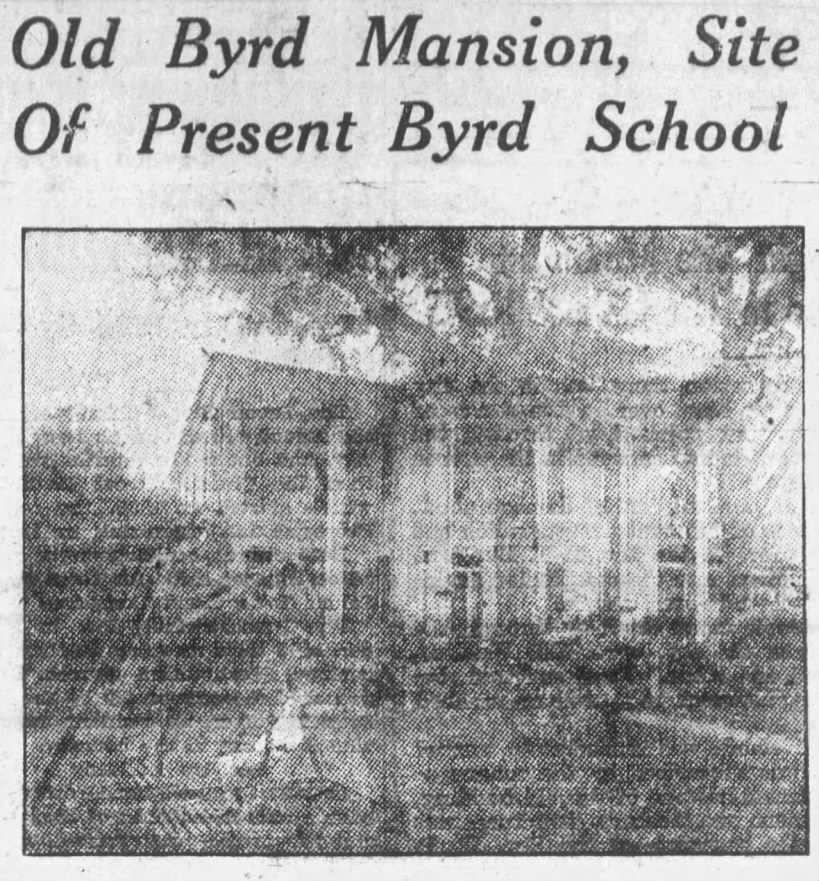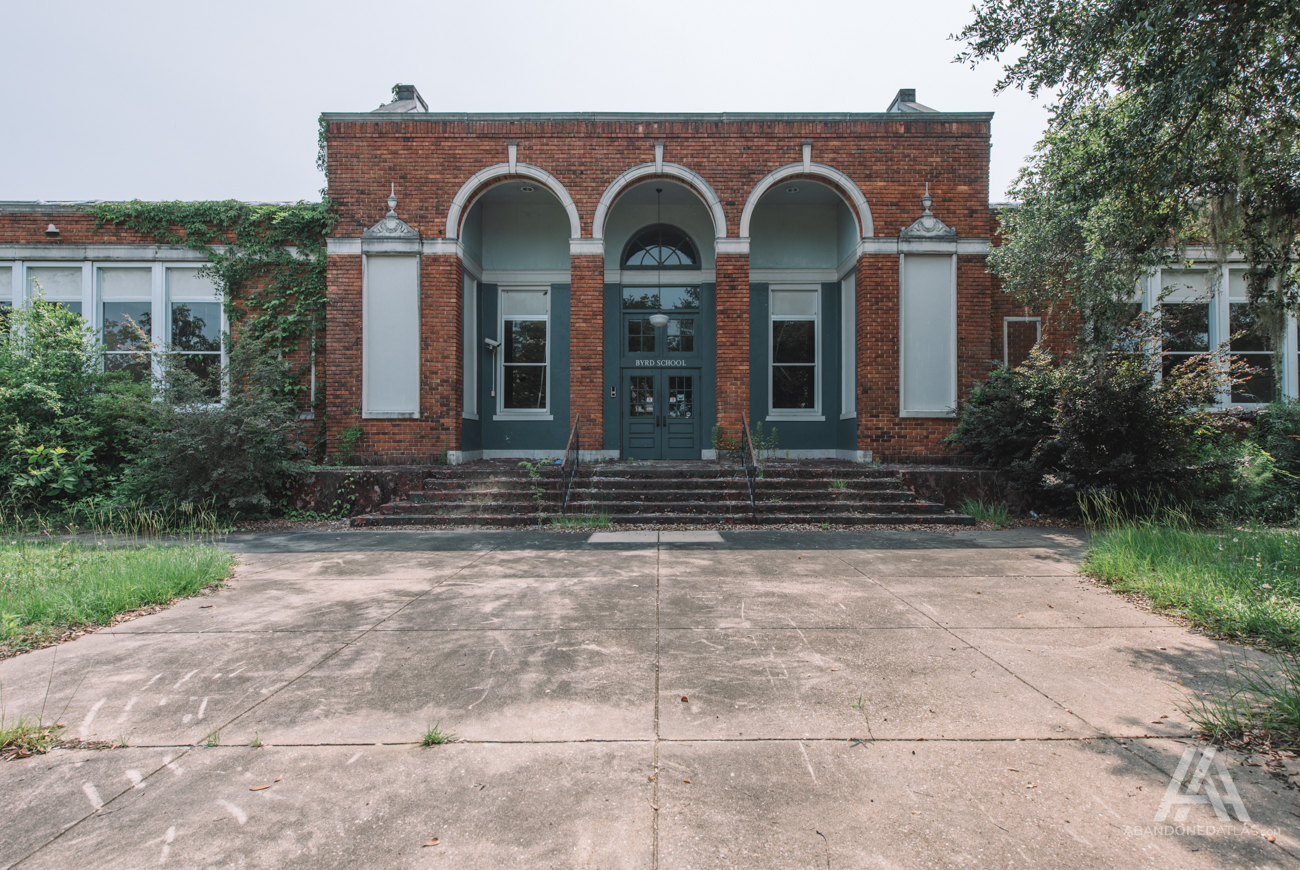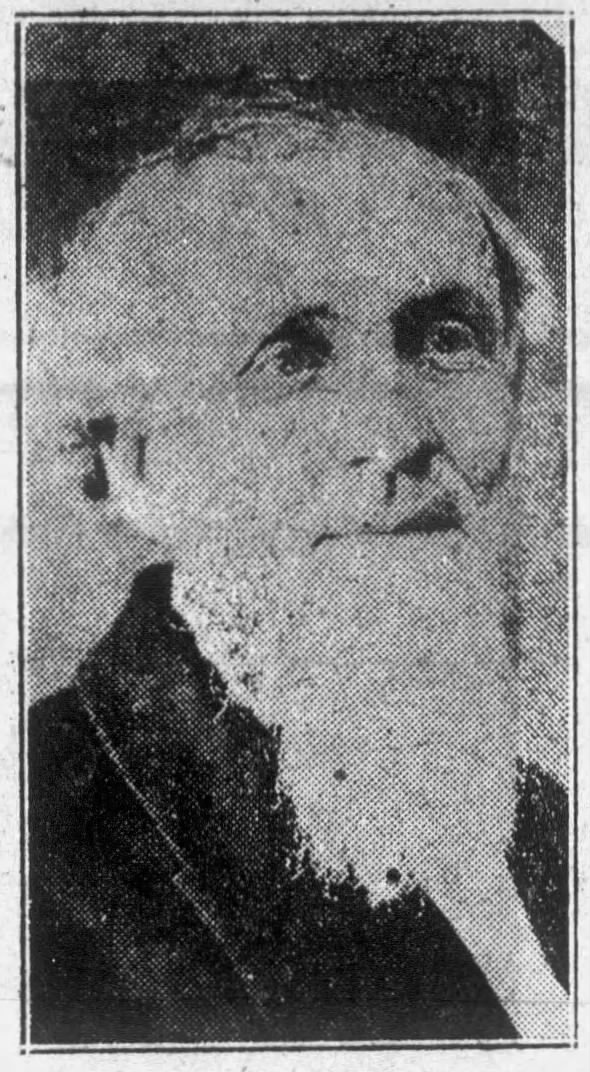| City/Town: • Selma |
| Location Class: • Educational |
| Built: • 1919 | Abandoned: • 2019 |
| Status: • Abandoned |
| Photojournalist: • David Bulit |
History of the Byrd School
The Byrd School is a former school located on Lapsey Street in what is known as the Old Town historic district of Selma, Alabama. It opened in 1919 and was designed by the prominent architecture firm Warren & Knight of Birmingham. The school building is located on the former site of Judge William M. Byrd’s antebellum mansion and was originally and officially known as the William Byrd Memorial School. One of the landmark features of the school is a large live oak tree out in front of the building, dubbed the “Byrd Learning Tree.” The tree predates the school, providing shade to the former William Byrd residence, and has been designated an Alabama Famous Historical Tree by the Alabama Forestry Commission.
Judge William M. Byrd
William McKendree Byrd was a justice of the Supreme Court of Alabama from 1866 to 1867. He was born in Mississippi on December 1, 1819, the son of William Sutton and Martha Easley Bryd. – September 24, 1874)
William M. Byrd attended Mississippi College before enrolling at LaGrange College in Franklin County, from which he graduated in 1838. After reading law in Holly Springs, Mississippi, he moved to Alabama and was admitted to the bar in 1841. He began his legal career in Linden, where he was elected in 1851 to represent Marengo County in the state legislature. Two years later, he relocated to Selma to continue his practice.
Byrd entered the judiciary in 1863, when he was elected chancellor of Alabama’s middle division. In 1865, the legislature chose him as an associate justice of the Alabama Supreme Court, and he assumed the bench on January 2, 1866. His tenure was cut short in 1868 when Reconstruction legislation passed by Congress removed him from office. Byrd then returned to private practice in Selma.
On September 24, 1874, William Byrd died when the seven-car Selma, Rome & Dalton Railroad train he was riding fell through a bridge at Waxahatchie Creek in Shelby County. According to reports, all the passengers were “more or less badly wounded.” Byrd and the boilerman, Henry Melton, were “killed outright.” Engineer Duncan and several others later died from their wounds. Byrd was buried in the garden of his home in Selma.
The William Byrd Memorial School
Following William Byrd’s death, his mansion on Lapsey Street in Selma was inherited by his daughter, Louis Byrd, wife of Judge Henry Phillips Pitts Sr. In May 1916, it was reported by The Selma-Times Journal that Judge P. H. Pitts and his family sold the Byrd property to the city for the erection of a new school building, which would be named William Byrd Memorial School in honor of the late judge. Shortly thereafter, the body of William Byrd was removed from the mansion’s garden and reburied in Live Oak Cemetery. The old mansion was later razed to make way for the new school building.
Construction of the Byrd School was completed in March of 1919 for $34,149. Before the school was completed, though, fifth and sixth-grade classes had already moved in while other grades awaited the completion of other rooms. The building was designed by the architecture firm Warren & Knight of Birmingham, with William T. Warren conducting the final inspection of the building.
William T. Warren, the Architect
William Tilman Warren was born on October 3, 1877, in Montgomery, Alabama, to James Rainey Warren and Fannie (Leak) Warren. He studied engineering at the Alabama Polytechnic Institute, earning a B.S. in 1897, and later pursued a B.S. in architecture at Columbia University, graduating in 1902. After completing his studies, Warren gained professional experience with the firms McKim, Mead & White and Albro & Lindeberg.
In 1907, Warren returned to Birmingham, where he established the partnership of Warren & Welton with William Leslie Welton. This collaboration dissolved in 1910. A few years later, in 1917, he partnered with Eugene H. Knight to form Warren & Knight. The firm expanded in 1922 to include John E. Davis, becoming Warren, Knight & Davis. Under this structure, Knight served as chief designer, Warren oversaw production and management, and Davis handled construction administration.
The firm grew further in 1946 when Albion K. Knight and John E. Davis Jr., sons of the original partners, joined the practice. John E. Davis was the first of the founders to pass away, in 1961, followed by Warren in 1962 and Knight in 1971. In 1976, the surviving partners incorporated the practice as Warren, Knight & Davis, Inc. The firm later became Davis, Black & Associates, Inc. in 1987 and Robert M. Black Architects, Inc. in 1991. Bob Black, its last principal, died in 2004, bringing an end to the firm, though it still legally exists.
Warren and his firms left a lasting imprint on Birmingham’s architectural heritage. While most of their work was concentrated in Alabama, they also completed significant projects in Florida, Mississippi, and Tennessee. Their portfolio included public and private buildings across Alabama as well as projects for Alabama A&M University, Alabama State University, Auburn University, and the University of Alabama. In Florida, they designed at least three county courthouses, and in Tennessee, they contributed to the campus of Sewanee: The University of the South.
Warren became a charter member of the Alabama chapter of the American Institute of Architects in 1916. He later served as chapter president and as a member of the AIA board of directors. In 1934, he was elevated to Fellowship, becoming the first Alabama architect to receive that distinction under the modern system established in 1898. He died on April 14, 1962.

Later Years and Closure of the Byrd School
The Byrd School was part of the Selma City Schools system and underwent several renovations and improvements throughout its history, including the addition of a sports court around 2010. At some point, the school’s “First Class Learning Center” status was incorporated into its name, reflecting its early learning programming.
In 2019, 100 years after its opening, the Byrd First Class Early Learning Center was among the schools selected to close by the Selma City Schools Board of Education as part of a strategic plan. After its closure, the building has suffered from neglect, vandalism, and damage sustained from Hurricane Zeta in 2020 and the Selma Tornado in 2023.
In August 2023, the Selma City Council approved selling the former Byrd School to Rhaglan Hospitality LLC, a private developer. Proposed future use includes converting the building into apartments and possibly adding a fast-casual restaurant. The developer has indicated plans to engage with the local neighborhood for community-based aspects in the redevelopment. As of 2025, though, concerns from neighborhood residents and historic preservationists about the building’s condition have been rising. Many fear that continued neglect may lead to loss of the structure.






















